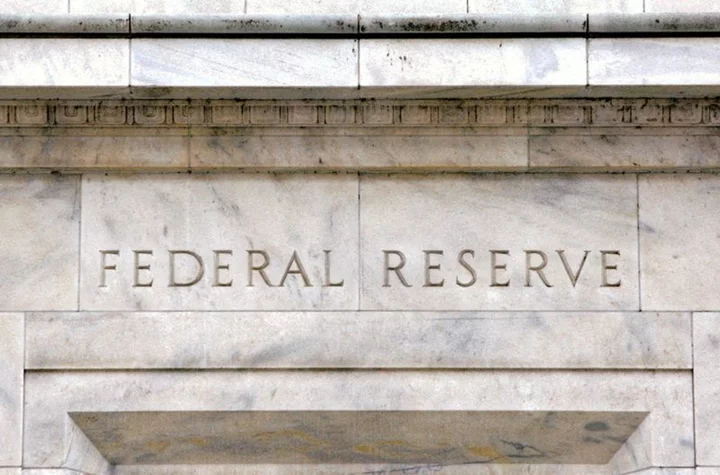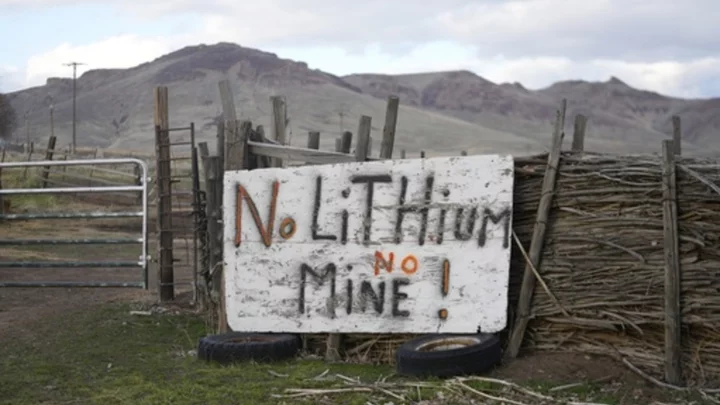By Gertrude Chavez-Dreyfuss
NEW YORK As Treasuries wobble ahead of the outcome of the Federal Reserve's monetary policy meeting on Wednesday, some investors are buying into the weakness, confident that a peak in interest rates will eventually lift the market for U.S. government debt.
It's a bet that has backfired several times in the past year, as stronger-than-expected economic growth forced investors to recalibrate views for how soon the U.S. central bank would cut rates, keeping Treasury yields elevated. Yields move inversely to bond prices.
Bullish investors, however, believe ebbing inflation and looming threats to U.S. growth in the fourth quarter make it likely that the peak for rates - and in turn, Treasury yields - is approaching.
"Our view is that the Fed is done (raising rates)," said Chris Diaz, portfolio manager and co-head of global taxable fixed income at Brown Advisory. "If conditions stay the way they are, growth is going to weaken," allowing the Fed to lower rates."
Yields on benchmark 10-year Treasury notes hit 4.366% on Aug. 22, the highest level since 2007. Their surge over the last several weeks reflects the view that the Fed is likely to leave rates around current levels for longer than many investors had previously expected.
Others, however, say it's only a matter of time until the Fed's monetary policy tightening pressures the economy and forces policymakers to cut rates. Additionally, many believe a 400-basis-point climb in the 10-year Treasury yield from its post-pandemic low leaves little downside for government bonds.
Diaz said his firm has "more duration than our benchmarks," meaning it has increased bets on longer-dated Treasuries in anticipation of rising prices.
Data from the Commodity Futures Trading Commission showed investors reduced short positioning on the U.S. five-year and 10-year Treasury futures in the latest week. Net shorts on benchmark 10-year futures have fallen for two straight weeks, while those on five-year futures have contracted about 18% from record levels in early August.
Investors widely expect the U.S. central bank's policy-setting Federal Open Market Committee to keep its benchmark overnight interest rate unchanged in the 5.25%-5.50% target range at the end of a two-day meeting on Wednesday.
Futures bets tied to the Fed's key policy rate on Tuesday were pricing less than a 30% chance of a rate hike in November and about 40% of one in December, LSEG's FedWatch data showed.
PEAK RATES?
Yields shot higher last year as the Fed unleashed a barrage of rate increases to tackle surging inflation, which soared to a 40-year high.
Though a crisis in the banking sector prompted investors to pile into Treasuries earlier this year, it didn't take long before yields were marching higher again, as the Fed hammered home its "higher-for-longer" mantra on interest rates.
Traders expect the central bank to begin cutting rates by September 2024, futures pricing showed. That compared to expectations earlier this year on rates starting to head lower in January 2024.
Bullish investors, however, say signs of ebbing consumer price pressures will keep another rate increase at bay. Inflation, as measured by the Fed's preferred gauge, the personal consumption expenditures (PCE) price index, has eased from its 7% peak last summer to 3.3% in July.
And while resilient growth has pushed most strategists to revise forecasts for a 2023 recession, an auto workers strike, a possible federal government shutdown, and a student loan squeeze on consumers are looming over the economy in the fourth quarter.
At the same time, some investors believe the economy risks a recession - or at least a sharp slowdown - sometime next year. One recession signal has been the inverted Treasury yield curve, a market phenomenon that has preceded past downturns.
"Our view is that the economy is slowing and ... so we would want to be more defensive overall," said Arvind Narayanan, senior portfolio manager and co-head of investment grade credit at Vanguard. "That leads us to be biased toward long duration."
Of course, more unexpected strength in the economy could force the Fed to keep rates elevated for longer, testing the patience of Treasury bulls once again.
U.S. Treasury Secretary Janet Yellen told Reuters this week that a "soft-landing" scenario for the U.S. economy can withstand near-term risks including the United Auto Workers strike and spillovers from China's economic woes.
Anders Persson, chief investment officer of global fixed income at Nuveen, said his firm believes the economy is holding up better than expected.
"From a scale of one to 10, with 10 being very comfortable with risk, we are a six," he said.
(Reporting by Gertrude Chavez-Dreyfuss; Editing by Ira Iosebashvili and Paul Simao)









